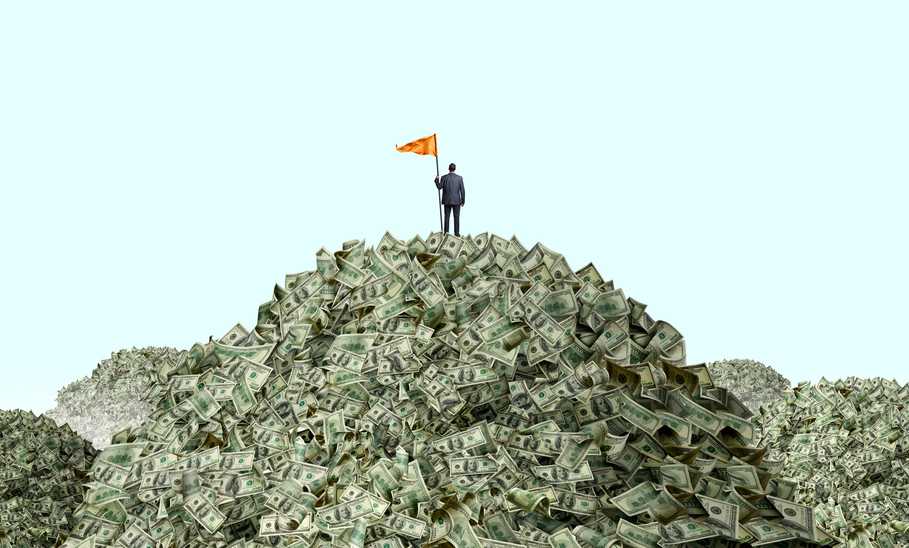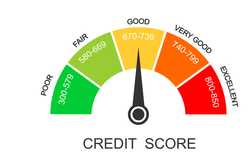7 Money-Saving Challenges Which Will Make You Save

Our evaluations and opinions are not influenced by our advertising relationships, but we may earn a commission from our partners’ links. This content is created by TIME Stamped, under TIME’s direction and produced in accordance with TIME’s editorial guidelines and overseen by TIME’s editorial staff. Learn more about it.
Who doesn’t want to save money? Thrift has been considered a virtue for centuries. Without enough money you can’t accomplish your personal and career goals, establish a decent quality of life for your family, or spend your later years in comfort.
Of course, the obstacles people face in saving money are not equal. Economic hardship, high costs for essentials like food and housing, and emergencies beyond our control can make it very difficult. Psychological problems that lead to overspending can be hard to overcome.
The techniques we present here are not intended for such situations. Nevertheless, they are useful methods for people who already have some means to tighten their belts, expunge bad habits, and increase their savings. To make the process a bit more interesting—and less dismal—we’re framing them as challenges.
One way to force yourself to save money is to leave your credit card at home. Determine how much you’d like to save from your paycheck, withdraw the remainder in plain old hard cash, and spend only that cash until your next payday.
Impulse spending can be devastating to a budget, but you can get away with it for a while if you’re swiping a credit card. With a finite amount of cash that diminishes each time you make a purchase, you’re less likely to spend what you don’t have. Reaching into your wallet only to realize that you’re nearly out of money will help you learn how to stretch a dollar.
For this strategy to work, it’s important to be realistic when it comes to creating your budget. Make sure it accounts for all of your necessities. Otherwise, you set yourself up for failure. Above all, your credit card must not be used as an escape hatch. It defeats the purpose of the exercise, not to mention putting you further in debt.
Most of us don’t spend money on things that add zero value to our lives. Some expenses, such as dining, entertainment, and travel, may seem inessential, but they go a long way to adding color to an otherwise drab month. All work and no play, as they say. (That goes double if a large part of your social life involves going out with friends or dates.) However, without discipline these purchases can quickly eat up an alarmingly high percentage of your income.
One solution is to temporarily halt one of the above categories at a time. This way you can identify which purchases tend to unnecessarily drain your account the most. For example, you could:
Alternatively, you could choose to freeze out specific merchants instead of spending categories. Think Amazon, Apple, Home Depot, or a favorite specialty food store. Be sure to choose one that you use regularly.
In fitness, a pyramid set is when you deliberately make each set harder than the last. For example, you may start your workout curling five pounds and add gradually heavier weights on each round.
Apply this strategy to your finances. At the start of the year, decide how much of your monthly income you’d like to set aside in savings—say 10%. Then, at the beginning of each new month, increase that number by 1%. This helps you to acclimate to spending less money, allowing you to figure out the most effective way to save for your specific situation. A 1% increase each month will be easier to achieve than trying to save 20% or more right out of the gate.
This challenge may eventually become quite uncomfortable, but saving money is usually not easy. You may have to grit your teeth and struggle to finish the last set of the year, but it’ll pay off.
You may have heard of apps that will round up your purchase to the nearest dollar and deposit the savings in your bank account. For example, if you spend $12.49 at the store, you’ll be charged $13, with the app automatically putting 51 cents into savings. It usually involves setting up checking and savings accounts in the app. Two examples are Acorns and Chime.
 |  | |
|---|---|---|
| Monthly fee | $3 per month for Acorns Bronze; $6 per month for Acorns Silver; $12 per month for Acorns Gold | $0 |
Money can add up fast when you do this, and you can accelerate your savings by increasing the amount you regularly round up. For example, make it to the nearest $5 increment instead of $1. Then, if your restaurant bill is $46, the app will round it to $50 instead of $47, and you’ll save $3 more each time.
At the end of the month, make sure to go through your transaction history and see how much you put into savings. You’ll feel good about it, and it may also make you more aware of how often you spend money.
Impulse purchasing afflicts everyone, so make it work for you. When you reach to buy something you don’t need, recognize the impulse and stop yourself. Then, take the money you would have spent and put it into your savings account. Each time you successfully deprive yourself of something you want will directly result in an increase in savings.
This doesn’t have to be restricted to big-ticket items.If you manage to remove that box of Krispy Kreme doughnuts from your shopping cart and place it back on the shelf, add its price to your ongoing monthly tally. You’ll be surprised at how it mounts up. And because you theoretically had the money to make your impulse purchase, it should be safe to just make a tally of your savings and deposit the funds at the end of the month. Unless, of course, you routinely overspend your monthly budget. In that case deposit the savings as you go.
There are almost certainly possessions in your house going unused and gathering dust. Old clothing, unwanted CDs, abandoned plush animals, that unloved table lamp from your great aunt, your kid’s old bicycle, etc. Challenge yourself to sell at least one item every month, no matter how seemingly inconsequential. You weren’t using it anyway, so you’re effectively getting money for nothing.
There are plenty of apps and online marketplaces nowadays, such as OfferUp, Poshmark, and Facebook Marketplace, that make selling such artifacts easy. It takes just a few phone taps to list your long-neglected item.
If the above challenges sound too difficult, use them as a template to create some that are more to your liking. For example, you could:
If the problem is not the challenge but rather sustaining it for a whole month, cut the duration in half and try it for two weeks every month. The point is to do something. Once you get into the habit of saving, it’s a lot easier to keep doing it.
Credit cards can be used to buttress your savings in multiple ways. With the right card(s) you can improve your finances to the tune of many hundreds of dollars per year.
Many rewards credit cards offer welcome bonuses worth hundreds of dollars after meeting minimum spending requirements. Simply earning one or two bonuses per year can translate into more than $1,000 in value annually.
Swiping a cash back credit card for your everyday expenses is an easy way to get a rebate on your purchases. If travel is in your future, consider opening a travel credit card that earns airline miles or hotel points. In many cases these rewards currencies can be worth considerably more than cash back.
You may also benefit from a credit card that offers an interest-free introductory annual percentage rate (APR) for a set period, usually anywhere from 12 to 21 months after account opening. If you’ve got large upcoming expenses that you reckon you won’t be able to pay off quickly, this could do wonders to save you from painful fees. You could also consolidate high-interest debt from other cards onto the 0% card, reducing your monthly interest payments.
Because banks are vying for customers, there’s no shortage of checking and savings account options. A main tactic of persuasion is to offer an introductory bonus after you open a new account and complete various requirements during a specific window. Many financial institutions offer a reward worth several hundred dollars after a few simple activities. This can be a relatively easy way to add to your savings.
Putting extra money into your retirement plan is one of the best ways to increase your savings. The more you invest, the more you can take advantage of the positive effects of compound interest.
Additionally, most retirement accounts are tax deferred, meaning you won’t pay taxes on the money until you decide to withdraw it. This will lower your taxable income each year, making contributions less burdensome.
Talking of retirement contributions, dollar-cost averaging (DCA) is a simple way to grow your balance. It can help you maintain your sanity in a volatile market by effectively automating your intermittent deposits.
Commit to investing the same amount of money in your individual retirement account (IRA) each week or month, regardless of current share prices. When prices are low, you’ll purchase more shares, and when they’re high, you’ll purchase fewer, but with this strategy you’ll always be adding shares. Make sure the amount you invest doesn’t exceed the yearly contribution limit.
Making a successful budget requires knowing where every penny you spend is going. You need a clear picture of your expenses in relation to your income and an understanding as to where you’re using your disposable income. The best budgeting apps can help you to do just this.
It’s true that investments in the stock market can do wonders to increase your net worth, but they can also do the opposite. It’s high risk, high reward.
For those who would prefer to avoid the danger of losing their money, high-yield savings accounts are an excellent alternative. The best high-yield savings accounts offer an annual percentage yield (APY) of 5% or more. This can translate into considerable cash if you’ve got a sizable balance, and you don’t need to worry about a sudden change in market value.
A certificate of deposit (CD) is another option to bolster your savings account balance. A CD requires you to keep a specific sum of money in it for a stated amount of time. In return you get above-average interest rates. As with high-yield savings accounts, the best CD rates tend to offer more than 5%.
For example, you may choose a six-month CD at a 5.15% APY. This means you pledge not to touch the amount of money you deposit for six months, at which time your money becomes available to you again along with the interest you’ve earned.
A money market account (MMA) combines the best features of checking and savings accounts. It offers the high APY of a high-yield savings account while providing the ability to spend that money (savings accounts often have limits as to how often you can touch your money). MMAs typically come with a debit card and check-writing privileges. The best money market accounts also tend to offer a 5% APY or above.
If one of the above challenges doesn’t work for you, try another. If none of them work, you may benefit from professional assistance. Try seeking a financial advisor.
Despite what some people think, financial advisors don’t exist just to serve the wealthy. They can help you decide which investments to purchase, review your retirement outlook, and much more. You’ll pay fees, but it’s not difficult to find an affordable one.
The above challenges can result in a significant boost to your net worth each year. Just be sure to choose activities you think you can achieve. Don’t sabotage yourself by setting the bar too high.
There are many difficulties in saving, not the least of which are external forces such as inflation, job loss, and emergency expenses. However, the inability to save can often be due to less intractable problems, such as impulse purchases, existing high-interest debt, and failing to set goals.
If you fall behind on your savings challenge, don’t give up. It may take a while before you figure out which approach helps you the most. You can customize them for your situation as you learn.
As stated above, these seven money-saving challenges aren’t for everyone. Some money problems are harder to solve than others. However, for those with some means who just need to rein in bad habits and be more aware of how they are spending their money, they should prove valuable.
The information presented here is created by TIME Stamped and overseen by TIME editorial staff. To learn more, see our About Us page.



